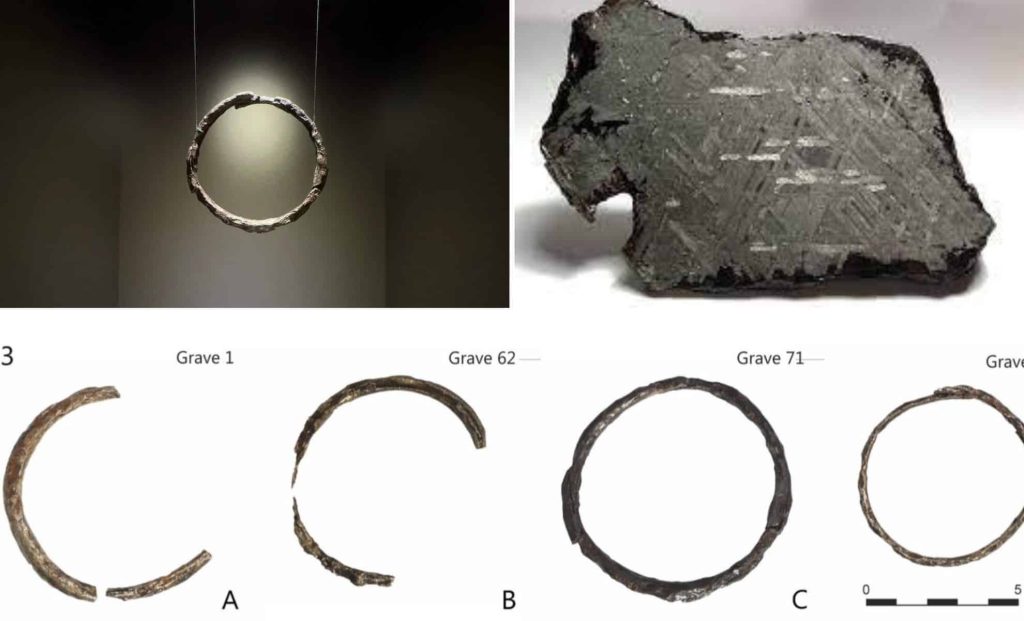Archaeologists Discover a 2,700-Year-Old Bracelet in Poland Made From Meteorite Iron, Linking Ancient Jewelry to the Stars
Sometimes history reveals treasures that connect our world to the cosmos in the most unexpected ways. Recently, researchers in Poland uncovered a remarkable artifact that does exactly that: a bracelet forged nearly 2,700 years ago from a meteorite. It is a piece of jewelry not just of earthly beauty, but of celestial origin, a tangible reminder of how ancient people found ways to work with materials literally fallen from the sky.
The discovery was made during a reanalysis of Iron Age burials near Częstochowa, a city in southern Poland. Archaeologists had long known of the burial sites and the items found there, but new scientific techniques allowed researchers to revisit the artifacts with fresh eyes and advanced tools. What they found was astonishing. Out of 26 iron objects tested from two local cemeteries, at least four bore the unique chemical signatures of meteorite iron. Among them was the bracelet, a stunning piece of craftsmanship that shines with both artistic and scientific value.

Meteorite iron is rare and distinctive. Unlike terrestrial iron, it is rich in nickel, which gives it a telltale composition easily identifiable through modern testing. For ancient people, who lived long before iron smelting was widespread, these celestial rocks would have been among the very few natural sources of workable iron. To them, a meteorite was no ordinary stone. It was a gift from the heavens, something extraordinary that could be shaped into objects of power, prestige, and beauty.
The bracelet from Poland reflects this idea perfectly. It was hammered from meteorite iron into a form that has survived thousands of years underground, still carrying the shine of its metallic structure. To the people who created it, the bracelet may have symbolized strength, divinity, or even a direct link to the sky. Imagine the awe of an Iron Age community watching a meteor blaze across the night, then later holding in their hands the cooled fragments of that very event. To turn that material into jewelry was to harness something magical.
This find also fits into a larger story of how ancient cultures around the world treated meteorite iron as something special. In Egypt, for example, the famous dagger buried with Pharaoh Tutankhamun was made of meteoritic iron. Across Europe and Asia, meteorite fragments were sometimes used in weapons, ornaments, or ceremonial tools. In every case, they carried a symbolic weight far greater than their practical use.

For modern researchers, the Polish bracelet is more than a beautiful relic. It offers clues into the technological skills of ancient people and their ability to recognize and work with rare materials. Forging iron from meteorites required not only curiosity but also knowledge of how to hammer and shape the tough material without modern smelting processes. It shows that these early craftsmen were observant, inventive, and deeply connected to both the natural and cosmic worlds around them.
The bracelet is also a bridge between time periods. It ties us, in our modern world of advanced science, back to communities that lived nearly three millennia ago. We can analyze its nickel content with machines and identify its origin with precise chemistry, but at its heart, the object tells a human story. It tells of people who valued beauty, who marked their lives with objects of meaning, and who looked up at the night sky with wonder, just as we do today.

In that sense, the bracelet is more than a discovery in Poland. It is a reminder of humanity’s enduring fascination with the stars. From ancient artisans shaping a cosmic stone into jewelry, to modern astronomers peering through telescopes, the connection between humanity and the universe is timeless. This bracelet, forged from a meteorite that once lit up the sky, continues to sparkle with mystery and awe.

